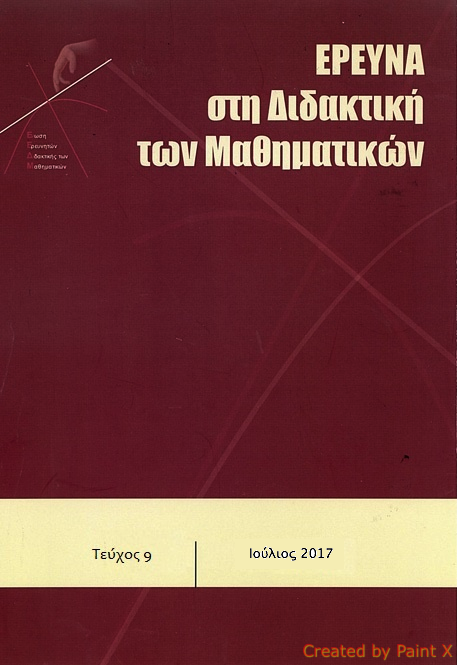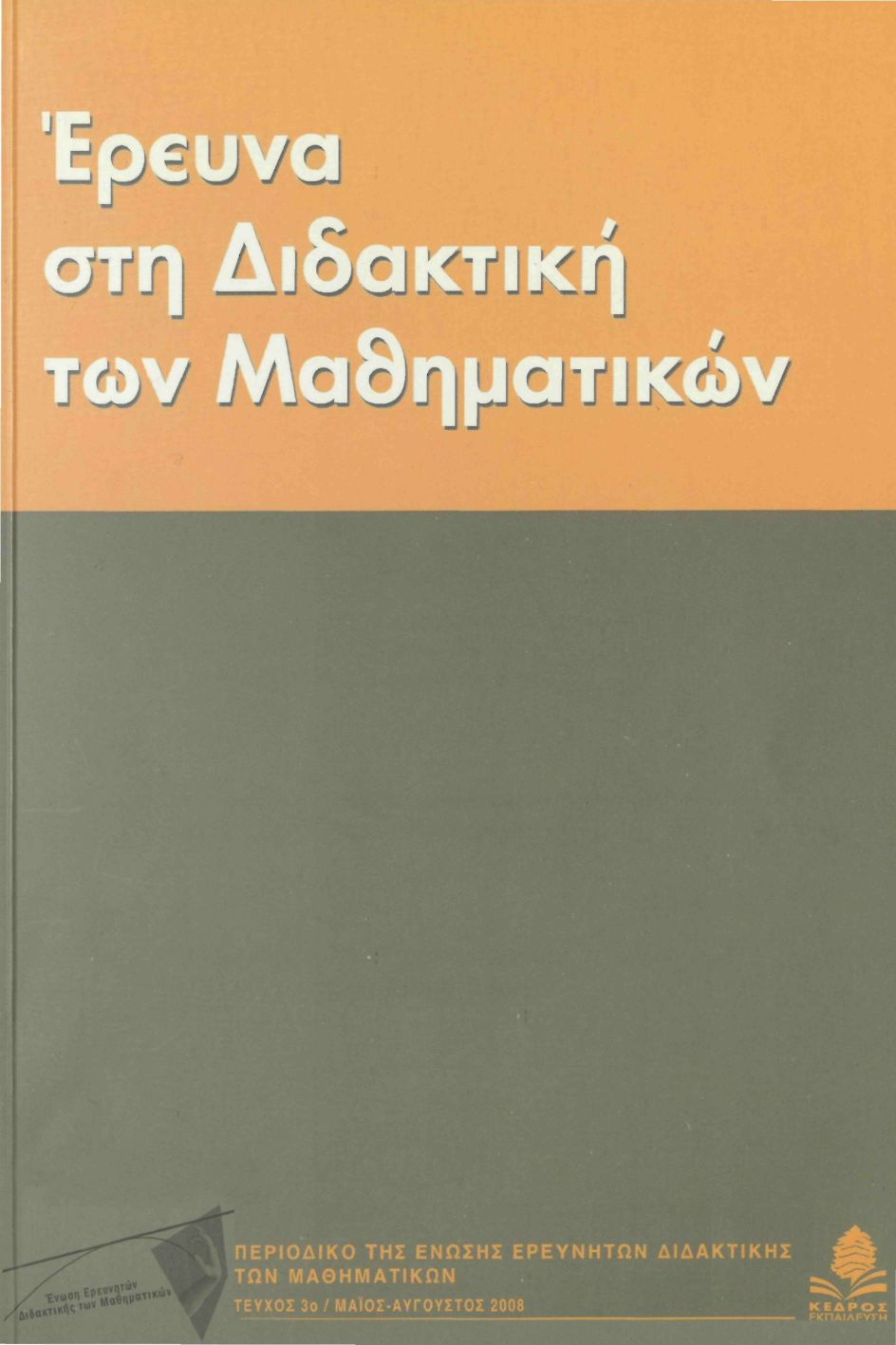ΕΙΚΟΝΟΓΡΑΦΗΜΕΝΟ ΒΙΒΛΙΟ ΜΕ ΚΑΤΑΣΤΑΣΕΙΣ ΕΠΑΝΑΛΑΜΒΑΝΟΜΕΝΗΣ ΜΟΙΡΑΣΙΑΣ ΚΑΙ ΟΙ ΔΡΑΣΕΙΣ ΤΩΝ ΝΗΠΙΩΝ
Abstract
H έννοια της διαίρεσης εισάγεται μέσω καταστάσεων μοιρασιάς οι οποίες, για αυτόν τον λόγο, έχουν εκπαιδευτικό και ερευνητικό ενδιαφέρον. Από έρευνες έχει φανεί ότι οι απλές καταστάσεις μοιρασιάς είναι μέρος της καθημερινότητας των παιδιών και παρόλο που εμπλέκονται σε αυτές και έχουν την ικανότητα να ανταποκριθούν σε έναν βαθμό, καταγράφονται και αρκετές δυσκολίες τους. Με σκοπό λοιπόν τη διερεύνηση των ικανοτήτων νηπίων να ανταποκριθούν σε καταστάσεις επαναλαμβανόμενης μοιρασιάς, χρησιμοποιήθηκε εικονογραφημένο βιβλίο ως το πλαίσιο του οποίου ο ρόλος έχει αναδειχθεί τόσο για την κοινωνική και συναισθηματική όσο και για τη γνωστική ανάπτυξη των μικρών παιδιών. Η έρευνα πραγματοποιήθηκε με ζευγάρια νηπίων, διαφορετικών επιδόσεων και επικοινωνιακών ικανοτήτων. Από τα αποτελέσματα φάνηκε ότι υπήρχαν ζευγάρια νηπίων τα οποία ήταν ικανά να ανταποκριθούν, εν μέρει, σε καταστάσεις επαναλαμβανόμενης μοιρασιάς μέσω εικονογραφημένου βιβλίου. Στοιχεία του εικονογραφημένου όπως η επανάληψη των καταστάσεων μοιρασιάς, αλλά και η απάντηση σε κάθε κατάσταση φάνηκε να βοήθησε εν μέρει τα νήπια, ενώ το θέμα της ιστορίας και η εικονογράφηση φάνηκε να τα εμπλέκει περισσότερο κοινωνικά και συναισθηματικά παρά γνωστικά.
Article Details
- Zitationsvorschlag
-
Σκουμπουρδή (Chrysanthi Skoumpurdi) Χ., & Παρακευή - Τσαμπίκα (Crisanthi Paraskevi - Tsampika) Χ. (2017). ΕΙΚΟΝΟΓΡΑΦΗΜΕΝΟ ΒΙΒΛΙΟ ΜΕ ΚΑΤΑΣΤΑΣΕΙΣ ΕΠΑΝΑΛΑΜΒΑΝΟΜΕΝΗΣ ΜΟΙΡΑΣΙΑΣ ΚΑΙ ΟΙ ΔΡΑΣΕΙΣ ΤΩΝ ΝΗΠΙΩΝ. Έρευνα στη Διδακτική των Μαθηματικών, (9), 59–82. https://doi.org/10.12681/enedim.14181
- Rubrik
- Άρθρα

Dieses Werk steht unter der Lizenz Creative Commons Namensnennung 4.0 International. Οι συγγραφείς των άρθρων που δημοσιεύονται στο περιοδικό διατηρούν τα δικαιώματα πνευματικής ιδιοκτησίας επί των άρθρων τους, δίνοντας στο περιοδικό το δικαίωμα της πρώτης δημοσίευσης. Άρθρα που δημοσιεύονται στο περιοδικό διατίθενται με άδεια Creative Commons BY και σύμφωνα με την άδεια μπορούν να χρησιμοποιούνται ελεύθερα, με αναφορά στο/στη συγγραφέα και στην πρώτη δημοσίευση.




